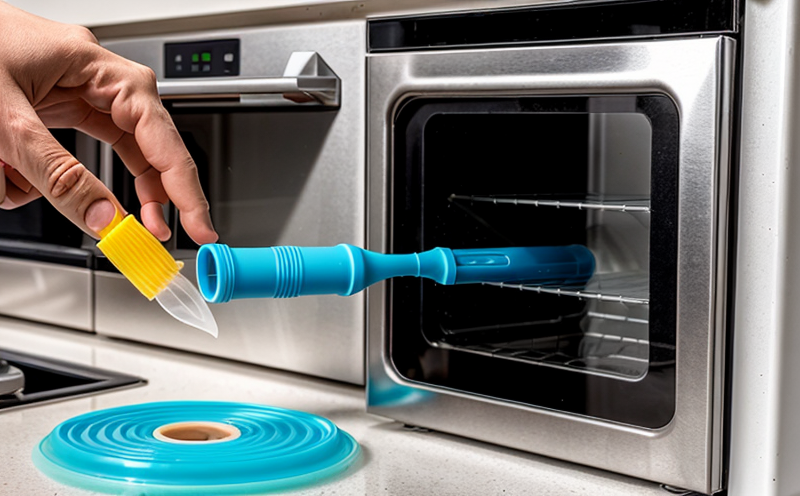ASTM E96 Moisture Transmission Testing of Household Plastics
The ASTM E96 moisture transmission testing is a critical procedure that helps determine the resistance to water vapor permeation for various household plastics. This test is essential in ensuring products meet regulatory requirements and consumer expectations regarding durability, safety, and performance.
ASTM E96 involves subjecting specimens of plastic materials to controlled environmental conditions, typically including exposure to a high-humidity atmosphere on one side and low humidity or dry air on the other. The rate at which water vapor passes through the material is then quantified by measuring changes in weight over time.
The primary goal of ASTM E96 testing is to evaluate whether household plastics can withstand moisture exposure without compromising their structural integrity, appearance, or functionality. This test is particularly important for products like food storage containers, medical devices, toys, and other items that come into contact with water or are exposed to environmental conditions.
For accurate ASTM E96 testing, it’s crucial to follow the standard closely. Specimen preparation involves cutting samples from production parts or using standardized test specimens. The specimens must be conditioned under specific humidity levels before testing begins to ensure consistent results. Once prepared, the specimens are placed in a moisture barrier cell where they undergo exposure to high-humidity conditions on one side and low-humidity conditions on the other.
The duration of the test can vary depending on the plastic type and desired accuracy but typically ranges from 24 hours to several days. During testing, the weight change of each specimen is measured regularly using sensitive analytical balances. The rate at which water vapor passes through the material is then calculated based on these measurements.
ASTM E96 provides detailed guidelines for conducting moisture transmission tests, including requirements for equipment calibration, sample preparation, and data interpretation. Compliance with these standards ensures reliable results that can be used to make informed decisions about product design and manufacturing processes.
Industry Applications
| Product Type | ASTM E96 Testing Application |
|---|---|
| Food Storage Containers | Evaluating the integrity of containers to prevent moisture and spoilage. |
| Toys | Detecting potential hazards from moisture exposure that could affect durability or pose risks. |
| Medical Devices | Ensuring sterility and preventing contamination due to humidity. |
| Household Appliances | Assessing the resistance of components to moisture in humid environments. |
Why Choose This Test
The ASTM E96 moisture transmission test is essential for ensuring household plastics maintain their quality and safety over time. By accurately measuring how much water vapor passes through different materials, manufacturers can optimize product design to enhance performance and extend shelf life.
This testing helps identify potential weaknesses in plastic formulations early in the development process, allowing for improvements that could otherwise lead to costly rejections or recalls later on. Additionally, compliance with ASTM E96 standards enhances brand reputation by demonstrating a commitment to high-quality products and consumer safety.
For quality managers and R&D engineers working within household plastics manufacturing industries, this test is invaluable for understanding material behavior under various conditions. It provides valuable insights into how different factors such as temperature, humidity, and duration of exposure influence the performance of plastic materials.
International Acceptance and Recognition
- The United States: ASTM E96 is widely recognized as the standard method for testing moisture permeation in plastics used in various consumer goods.
- Europe: Countries adhering to European standards also use ASTM E96, integrating it into national and regional regulations.
- Asia-Pacific: Many countries within this region incorporate ASTM E96 into their local product safety guidelines.





